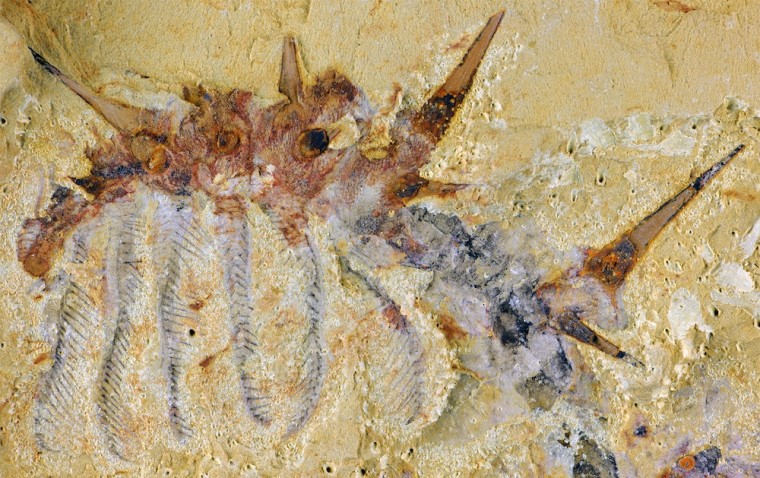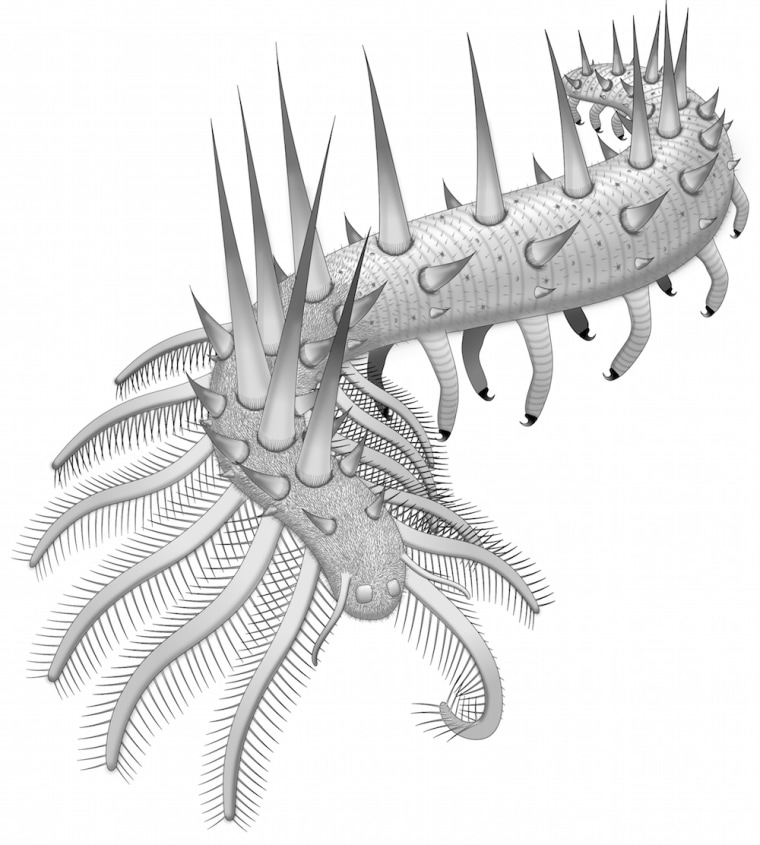A spiky, wormlike creature with 30 legs — 18 clawed rear legs and 12 featherlike front legs that likely helped it filter food from the water — once lived in the ancient oceans of the early Cambrian period, about 518 million years ago, a new study finds.
The critter is one of the first known animals on Earth to develop protective armor and to sport specialized limbs that likely helped it catch food, the researchers said.
"It's a bit of a large animal for this time period," said one of the study's lead researchers, Javier Ortega-Hernández, a research fellow in paleobiology at the University of Cambridge. "The largest specimen is just under 10 centimeters [4 inches], which, for a wormy thing, is quite mighty."
The creature likely used its rear clawed legs to anchor to sponges or other penetrable surfaces, and waved its feathery front limbs to and fro in the current to catch nutrients in the water, Ortega-Hernández said.
A squishy creature that didn't move quickly needed a steadfast defense strategy, and that's likely why it had so many spikes, he said. Other Cambrian wormlike creatures, such as the bizarre Hallucigenia, also sported spines.
Researchers have dubbed the new creature Collinsium ciliosum, or Hairy Collins' Monster, named after Desmond Collins, a paleontologist who discovered a fossil of a similar Cambrian wormlike creature in Canada in the 1980s. Since then, researchers have found five species of Collins' Monster, including one from Australia.
But, unlike earlier fossils, the newfound specimens offer researchers a spectacular view of the prehistoric creature. One fossil displays much of Collinsium ciliosum's body, including its digestive tract and even the delicate, featherlike structures on its front limbs.

The study is "a superb description based on absolutely exquisite fossils," said Greg Edgecombe, a researcher of arthropod evolution at the Natural History Museum in London, who was not involved in the new study.
The findings were published online June 29 in the journal Proceedings of the National Academy of Sciences.
This is a condensed version of a report from Live Science. Read the full report. Follow Laura Geggel on Twitter @LauraGeggel. Follow Live Science @livescience, Facebook & Google+.
